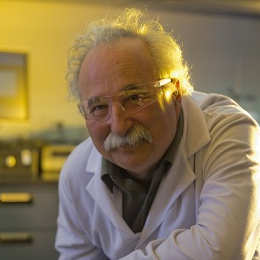Biosensors – Recent Advances and Future Challenges
A special issue of Sensors (ISSN 1424-8220). This special issue belongs to the section "Biosensors".
Deadline for manuscript submissions: closed (30 September 2020) | Viewed by 127731
Special Issue Editors
2. CSGI - Center for Colloid and Surface Science, CSGI@UniBa, Via E. Orabona, 4 -70125 Bari, Italy
Interests: wearable biosensors; biofuel cells; redox polymers; printing enzymes; redox proteins
Special Issues, Collections and Topics in MDPI journals
Interests: bioelectronics; bionanotechnology; bioelectrochemistry; biosensors; self-assembling enzymes; monolayers; modified electrodes
Special Issues, Collections and Topics in MDPI journals
Special Issue Information
Dear Colleagues,
The present Special Issue is devoted to all aspects of biosensing in a very broad definition, including, but not limited to, biomolecular composition used in biosensors (e.g., biocatalytic enzymes, DNAzymes, abiotic nanospecies with biocatalytic features, bioreceptors, DNA/RNA, aptasensors, etc.), physical signal transduction mechanisms (e.g., electrochemical, optical, magnetic, etc.), engineering of different biosensing platforms, operation of biosensors in vitro and in vivo (implantable or wearable devices), self-powered biosensors, etc. The biosensors can be represented with analogue devices measuring concentrations of analytes and binary devices operating in the YES/NO format, possibly with logical processing of input signals. The articles addressing biochemical/biophysical aspects of biosensors, engineering information, commercial highlights, and other aspects of biosensor research and application are welcome. The articles should address most recent advances and future perspectives and challenges in biosensors/biosensing.
The present Special Issue will cover all research areas related to biosensor devices, biosensoric procedures, and various biosensor applications, specifically emphasizing biomedical applications and environmental monitoring. The Special Issue will be composed of review-style articles, which can be comprehensive literature reviews or reviews based on the author’s research activities (like concept papers). The Special Issue is planned for later conversion to a book on the same topic.
Prof. Dr. Paolo Bollella
Prof. Dr. Evgeny Katz
Guest Editors
Manuscript Submission Information
Manuscripts should be submitted online at www.mdpi.com by registering and logging in to this website. Once you are registered, click here to go to the submission form. Manuscripts can be submitted until the deadline. All papers will be peer-reviewed. Accepted papers will be published continuously in the journal (as soon as accepted) and will be listed together on the special issue website.
Submitted manuscripts should not have been published previously, nor be under consideration for publication elsewhere (except conference proceedings papers). All manuscripts are thoroughly refereed through a single-blind peer-review process. A guide for authors and other relevant information for submission of manuscripts is available on the Instructions for Authors page. Sensors is an international peer-reviewed open access semimonthly journal published by MDPI.
Please visit the Instructions for Authors page before submitting a manuscript. The Article Processing Charge (APC) for publication in this open access journal is 1800 CHF (Swiss Francs). Submitted papers should be well formatted and use good English. Authors may use MDPI's English editing service prior to publication or during author revisions.
Keywords
- electrochemical biosensors
- optical biosensors
- enzyme-based biosensors
- DNA-biosensors
- nanobiosensors
- flow-cell biosensors
- environmental biosensors
- biomedical biosensors
- homeland security biosensors
- implantable biosensors
- in vivo biosensors
- wearable biosensors








